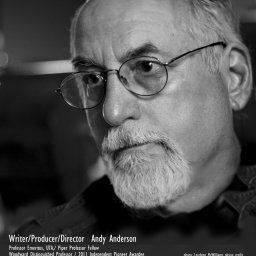 A film director’s unique vision and style can have an incredible impact on the outcome of a film; if two directors are given the same script, the finished products may be worlds apart. While all directors have a personal style that they impart into their films, some directors have signature elements that are unmistakably theirs. Below are five directors and their unique personal trademarks.
A film director’s unique vision and style can have an incredible impact on the outcome of a film; if two directors are given the same script, the finished products may be worlds apart. While all directors have a personal style that they impart into their films, some directors have signature elements that are unmistakably theirs. Below are five directors and their unique personal trademarks.
Alfred Hitchcock: The Cameo – One of the most well-known director signatures, Alfred Hitchcock’s propensity for making cameos in many of his films became somewhat of a game for many first-time viewers of his films as they search for the director’s brief appearance. Hitchcock appeared in 39 of his 52 major films, often toting a musical instrument. As audiences became aware of his signature gesture, he began appearing more prominently and earlier in the film so that viewers would not be distracted from the story while searching for him.
Quentin Tarantino: The Trunk Shot – Though not invented by Tarantino, the “trunk shot” – in which a camera appears to be placed inside the trunk of a car, looking up and out – has been so often used in his major films that it has come to be generally associated with Tarantino films. The angle is used in notable scenes in many of Tarantino’s major films, including Reservoir Dogs, Pulp Fiction, Jackie Brown, Kill Bill, and Inglourious Basterds.
Wes Anderson: The Collaborations – Wes Anderson’s directing style contains so many signature elements (in fact, a “Wes Anderson Bingo” game even exists on the Internet), it might seem hard to choose just one. While a strong case could be made for many of the recurring elements as being his “signature”, including the slow-motion closing shots and his symmetrical framing, Anderson’s casting choices are a defining feature that often make his films recognizable without watching a single frame. Among the most frequent collaborators, Bill Murray and Owen Wilson have each appeared in six of his seven full-length films while Jason Schwartzman has appeared in four; all three are also slated to appear in his upcoming film, The Grand Budapest Hotel.
M. Night Shyamalan: The Twist – A predictable ending doesn’t necessarily make for a bad film, a twist that audiences don’t see coming can definitely create a fun experience that leaves people talking and creates a buzz around the movie. Suspense and horror movie director M. Night Shyamalan has embraced the twist ending or plot development to the extent that it has become a signature element of his films; audiences often go into his films not wondering whether there will be a twist, but trying to guess what the twist will be.
John Woo: The Doves – Director John Woo is known for making action-packed films filled with fight scenes, battles and shoot-outs. It may seem an odd juxtaposition, then, that so many of Woo’s films feature his signature shot of white doves or pigeons, often flying in slow-motion. Woo has stated in interviews that his birds are a deliberate use of symbolism, used in his films to represent both purity of the characters’ souls as well as the traditional Christian spiritual connection of messengers between people and God.
Still Have More Questions?
KD Conservatory has acting, musical theatre, and film production programs to help prepare students for careers in the entertainment industry. Contact us with any of your questions, or check us out on Facebook for ongoing updates and information!



